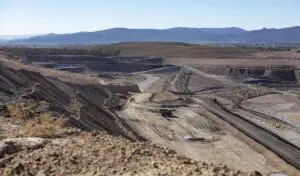News of the week
The main news of the week was, I guess, the COAG Energy Council endorsement of much of Finkel. In practice we doubt if this means much in the very short term.
The key things that will matter though will be what the newly formed Energy Security Board actually does. That will depend on who the Chair is, and we don’t know that yet.
Secondly, the Generator Reliability Option [GRO] has been approved but to action this it requires the AEMO to come back with advice and then the AEMC to approve a rule change.
So, there is lots of water to flow under the bridge as the details are sorted out. We want to stress that making every generator responsible for its own dispatchability is on the face of it dumb.
There is no other way to put it. The idea is to make the system reliable not necessarily each individual generator. Still we will just have to wait and see how its implemented.
One way might be to create a market for dispatchability that intermittent and other generators could purchase from.
We will just have to wait and see but certainly this will be a great test of just how talented Audrey Zibelman and the AEMO actually are.
![]() (To hear RenewEconomy editor Giles Parkinson and ITK analyst David Leitch discuss these issues, please tune in to our Energy Insiders podcast, which can be found here).
(To hear RenewEconomy editor Giles Parkinson and ITK analyst David Leitch discuss these issues, please tune in to our Energy Insiders podcast, which can be found here).
In the meantime developments in dispatchability continue all over the NEM.
We will have lots more to say about pumped hydro and hydro in general over the coming weeks, but in this space at this time we wanted to draw attention to two great case studies of behind the meter PV and storage presented at the recent Australian Energy Storage Conference.
Last year these case studies were hard to find. This year they are more common.
Figure 1 just provides some indicative numbers. Bundaberg Christian College is getting a 7 year payback on its system. LonelyPlanet has no risk and no cost.
Where these case studies exist there must be plenty more. Exciting times in the behind the meter industry.

Turning to the weekly action to July 14.
- Volumes: NEM wide volumes were down 1% on PCP and all States other than NSW and Tasmania were below last year. For the CYTD NEM wide volumes are flat with NSW at 2% and Tasmania 8% showing growth. The growth spurt in QLD has expired.
- Future prices were mixed with a 1% rise in NSW and a 2% fall in Qld. Victorian prices fell a more meaningful 3%. The futures curve remains in backwardation.
- Spot electricity prices were 60% lower in South Australia last year which we attribute to much lower gas prices. However spot prices in NSW were up 38% and in Victoria more than double last year.
- REC No change.
- Gas prices Were down very sharply on PCP, down 54% in South Australia to $8.9 GJ despite the State having more gas generation and down 11% in QLD to just $6.30 GJ. The fall in gas prices clearly benefits South Australia more than anywhere else due to gas setting the price the majority of the time in that State. However gas is now also setting the price in Victoria, as we previously showed. And its an open cycle (expensive to operate continuously) generator, Mortlake at that. Even though a lot more renewables are being built around Australia, we need more in Victoria to get gas out of the price setting frame.
Nem wide gas generation is up 20-30% since Hazelwood closed to about 2.5 GW. As stated the particularly galling fact is that most of its open cycle, or gas steam turbine


Despite that gas prices are lower. Go figure.
- Utility share prices. Genex shares continued their strong run assisted by every subsidy known to man or beast. Not that we think this is a bad thing, just noteworthy. APA 7% down & SKI 10% down have had significant falls over the past month. This may reflect the market’s view about interest rates. We are just about into reporting season. Next week if time permits we will look at analyst consensus across the sector.

SHARE PRICES


VOLUMES


BASE LOAD FUTURES, $MWH


GAS PRICES


David Leitch is principal of ITK. He was formerly a Utility Analyst for leading investment banks over the past 30 years. The views expressed are his own. Please note our new section, Energy Markets, which will include analysis from Leitch on the energy markets and broader energy issues. And also note our live generation widget, and the APVI solar contribution.






